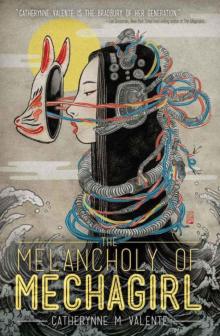


The Brain, Page 4
Gary L Wenk
The amygdala also becomes quite active when other people are looking at us. This response underlies why public speaking is usually rated as people’s number-one fear; even more feared than heights, deep water, death, bugs, loneliness, and darkness. Neurons in the amygdala pay attention to the eyes of other people in order to inform you whether someone is staring at you. Staring at one’s prey is a challenging action that is often a prelude to an attack. If someone in a crowded room, even if it was only a little girl holding her doll, started staring at you, how would that make you feel? She is following you, keeping her eyes trained on your every move; even her doll’s eyes now seem focused on you. What does she want from you? Why is she following you? Feeling threatened yet? Yes, indeed! We all would respond with fear to a similar situation, no matter how innocent the “attacker” might seem.
Children with autism do not respond to staring; magnetic resonance imaging (MRI) scanning studies of their amygdalae indicate that these children primarily pay attention to the mouths of other people and, therefore, miss critical social cues. The amygdala in older people is less responsive to social cues, threatening or not, than it is in younger people. Why? Possibly because as we get older and experience numerous and varied emotional and fearful events, our frontal lobes gain more control over how the amygdala responds to incoming sensory information. Studies have shown that the frontal lobe is responsible for turning off the amygdala. Indeed, humans with a thicker frontal cortex (specifically, the bottom middle of the brain) have a greater ability to reduce activation of their amygdala that is prompted by strongly emotional stimuli. You might remember the television show Star Trek and the planet of Vulcans who were always in complete control of their emotions; possibly the Vulcans had big frontal lobes.
Studies of brains from preterm babies have shown that the amygdala is wired up to the rest of the brain prior to birth and is, therefore, capable of helping the brain store strong, usually fearful, emotional memories. This might explain why some adults have inexplicable fears. Possibly, at this very early stage of brain development, the amygdala was able to record a negative memory while the hippocampus was still unable to form a memory of the event associated with the unpleasant experience.
Why are close-talkers so frightening?
During the fifth season of the long-running and very popular sitcom Seinfeld, we were introduced to a person who was a “close-talker,” a person who stands unusually close to others when speaking. We have all met this person. A colleague of mine used to stand so close when talking to me that his hand gestures actually occurred behind my head; they only could be appreciated by someone standing behind me! Is there an explanation for this behavior? Studies have found that bilateral damage to the amygdala reduces a person’s need for interpersonal distance when talking to others. Although numerous social and cultural differences might explain why some people do not acknowledge your personal space when talking to you, some of these “close-talkers” might have a poorly functioning amygdala due to injury, mild hypoxia, or inheritance. Bilateral damage to the amygdala also may reduce a person’s ability to produce a normal fear response to dangerous stimuli. In humans, one peculiar consequence of bilateral amygdala injury is the loss of the ability to laugh at other people’s jokes; in contrast, these individuals are capable of laughing at their own jokes. Age-related changes in the amygdala thus might explain why your grandfather never laughs at your jokes; rest assured, however, you really are very funny.
What is depression?
Given the important role of the amygdala and hippocampus in the control of emotion, it is not surprising that scientists have discovered a connection between impaired function in the amygdala and hippocampus and symptoms of depression. Numerous studies have discovered that the hippocampus is smaller in patients with major depression as compared to those without the illness. The degree of brain shrinkage is influenced by how long the depression has been untreated. Imaging studies have shown that the activity of neurons within the amygdala also is significantly altered in patients with major depressive disorder. One day, noninvasive monitoring of the activity of these brain regions might offer better diagnostic accuracy for major depression and provide insight into whether specific treatments are truly helpful for this devastating brain disorder. A cure for depression is badly needed.
Each year, more than 100 million people worldwide develop clinically recognizable depression. The incidence of depression is 10 times greater than schizophrenia. Nearly twice as many women than men will report at least one major depressive episode during their lifetime. Depression is the leading cause of disability for women aged 15–44 years across all nations and cultures. The diagnosis of depression depends on three main factors: etiology, severity, and duration. Etiology refers to the cause of the depression. For example, depression may appear as a normal reaction to grief or as a primary affective disorder, as a reaction to the withdrawal of a drug, or as a component of a wide variety of medical problems, such as cancer or liver disease. Severity is a measure of how debilitating the symptoms are to the person’s lifestyle. Everyone experiences occasional feelings of sadness that may last a few days; in contrast, major depression is characterized by long-term (usually longer than two weeks) feelings of hopelessness, irritability, and loss of interest or pleasure in most activities. In addition to these symptoms, depression often is associated with significant changes in appetite or weight, poor sleep quality, excessive feelings of guilt, feelings of worthlessness, lethargy, and recurrent thoughts of death or suicide attempts.
Over the past century, younger and younger people are being diagnosed with major depression. There are many possible reasons for this trend, such as increased life stressors, more sensitive diagnostic methods that are catching previously undiagnosed cases, and an increase in the number of patients, particularly males, willing to seek medical care at earlier ages. Depression has many causes; this has necessitated many different, and sometimes quite dangerous, treatments.
How is depression treated?
In 1786, the Italian physician Luigi Galvani recognized that our brains communicate by electrical signals; this led to the development of ways to utilize electricity to manipulate brain function. Electroconvulsive therapy (ECT) was first introduced in 1938 and involves applying a brief electrical pulse to the scalp while the patient is unconscious (we hope) under anesthesia. ECT was found effective for treating multiple psychiatric illnesses, especially depression. The experience of ECT sounds horrifying and the treatment still carries a highly negative stigma. Following the introduction of safer antidepressant medications, the use of ECT treatment declined during the 1960s. Its use has increased since the late 1970s because of improved delivery methods and increased safety and comfort measures. ECT most commonly is administered to patients who fail to respond to medications or who do not tolerate the side effects of standard medications. Most important, when patients demonstrate symptoms that increase the risk of harm to themselves or others, ECT may be the treatment of choice because its benefits are almost immediate.
In comparison, the non-ECT treatments currently available for the treatment of depression are only modestly effective, and treatment resistance remains a significant problem. Unfortunately, according to recent analyses, our current antidepressant medications are no more effective than those introduced over 50 years ago, although the newer drugs usually have fewer unpleasant or dangerous side effects. Because most patients show spontaneous recovery from their depression, especially when it is a reaction to life events, it is estimated that today’s medications only provide for about 20%–30% more recoveries than if no drug were administered at all! Consider that statistic for a moment: Doing nothing works for almost 80% of people diagnosed with depression. The problem is that healthcare providers are not able to predict which patients fall into that 20%–30%; thus, today virtually all depressed patients are medicated.
Most drugs prescribed today to reduce the symptoms of depression (there is no cure) act by enhancing the acti
on of the neurotransmitters serotonin, dopamine, or norepinephrine. These neurotransmitters are produced in your brain from the components of your diet. They are used by neurons to communicate with each other; serotonin, dopamine, and norepinephrine all play a role in determining how you feel. Current antidepressant medications block the inactivation of serotonin, norepinephrine, or dopamine within the synapse by blocking reuptake; thus, they are called selective reuptake inhibitors. If the drug selectively prevents the reuptake of serotonin, for example, it is given the acronym SSRI (selective serotonin reuptake inhibitor). Selective reuptake inhibitors slow the inactivation of neurotransmitters once they are released from neurons; this prolongs the time that they are available to act upon other neurons. Think of these drugs as door locks and the neurotransmitters as cats. You open the door and your cats run outside and interact with other cats in the neighborhood; you put an end to this playtime by opening the door and allowing the cats to rush back inside. Selective reuptake inhibitors keep the door locked so that the cats are forced to stay outside and play for a longer period of time. Ultimately, the neighborhood (your brain) is full of cats (e.g., serotonin) running around between the houses (neurons). However, simply because this is how these drugs can act within the brain does not offer any insight into how the drugs actually do reduce the symptoms of depression. Fortunately, the U.S. Food and Drug Administration (FDA) does not require that the therapeutic mechanism of a drug be understood, only that the drug works and is safe. The modern selective reuptake inhibitors are considered relatively safe and effective for most patients.
Why do you sleep so poorly when you are depressed?
Depression is often inherited and also can develop in association with other common mental or physical disorders. For example, depression, sleep disorders, and migraine headaches may all have similar underlying neural mechanisms; they often co-occur, more often in women than in men. In a recent study of patients with migraine, 58% reported also suffering anxiety regularly, 19% had chronic long-standing depression, and 83% had poor sleep quality with excessive daytime sleepiness. The connection between sleep and depression is fascinating because it might offer clues to understanding both phenomena. Let us take a look at one of these clues: nondepressed people start dreaming about two hours after falling asleep; depressed people start dreaming almost immediately. When depressed people start taking antidepressant medications, the time it takes for them to enter their first dream episode lengthens toward a normal duration. If this does not happen, the prognosis for recovery on that medication is poor. Sleep deprivation has a well-known antidepressant effect but only if one is depressed. As many of us learned during college, skipping a night of sleep will not make a nondepressed person happier. Indeed, it tends to make people anxious and irritable, reactions which are often symptoms of depression. The same applies to antidepressant medications; that is, if you are not depressed, taking an antidepressant drug will not make you happier. For many migraine sufferers, depression typically begins with the onset of their migraine and coincides with bouts of insomnia and anxiety. About 25% of patients with migraine have depression, and almost 50% of these patients also have anxiety. People with migraine, depression, and anxiety are more sensitive to subtle shifts in hormonal levels as well as to air travel, sleep loss, or specific foods; many of these act as triggers for one or more of these symptoms. The genes that link these various disorders have not been discovered.
Why is depression so common?
Depression has been called the common cold of mental illnesses because all of us catch it at some point in our lives. This is a fitting metaphor given what is now known about one potential cause of depression. An imbalance in gut bacteria and viruses may underlie depression. Therefore, depression may be so common because an imbalance in the variety of gut bacteria is so easy to induce. Lifestyle choices, such as shift work or smoking, the overuse of antibiotics, or disease conditions such as irritable bowel syndrome, are associated with depression and a reduction in the variety of gut bacteria.
Recent investigations of humans and locusts have focused upon the effects of bacterial infection, the development of body and brain inflammation, and the appearance of sickness behavior or depression. Recent studies show that the level of proinflammatory proteins in the blood increase during depression. Most of these proinflammatory proteins can cross the blood–brain barrier easily and influence brain function. In addition, the current antidepressant medications exhibit anti-inflammatory proclivities. Moreover, obese humans produce significant amounts of proinflammatory proteins. Taken together, these findings may explain why obesity and depression occur so often in advanced industrial economies and often are inherited together. Furthermore, obese humans do not respond well to most antidepressant drugs, as compared to nonobese depressed patients. More on this later.
What is the role of serotonin in depression?
Humans and locusts use the neurotransmitter serotonin for apparently similar functions. When serotonin levels are too low due to the content of their diet or stress from overcrowding, both locusts and humans display solitary behaviors and make an effort to become isolated from others. When humans consume diets that are low in tryptophan, a condition often seen when someone first goes on a vegetarian or vegan diet, the brain produces much less serotonin and humans display many of the symptoms of depression such as anxiety, irritability, and difficulty thinking. When locusts eat grain containing tryptophan, their brains make more serotonin and they become gregarious and spend time in the company of large crowds of other locusts aggressively eating tryptophan-containing fields of crops. When depressed humans take medications that enhance serotonin function in their brains, they become happier and enjoy the company of friends and family. Depression and sickness behavior (malaise, failure to concentrate, sleepiness, fatigue, coldness, muscle and joint aches, and reduced appetite) share many features that are regulated by infection status, level of inflammatory proteins being produced, and availability of specific nutrients in the diet that lead to the production of serotonin. Sickness behaviors are initiated by our immune system in response to infection or injury; their goal is to remove us from potential harm while we heal.
Taken together, these similarities suggest that depressive behaviors are so common because they evolved as a universally needed survival mechanism that was passed on from generation to generation as an effective method of surviving in a dangerous world teeming with opportunities for injury and infection. All species, from locusts to humans, may have evolved the ability to suffer depression because it has survival value for the individual, and, therefore, the species. However, due to the negative health consequences of long-term inflammation in the brain and body, the symptoms of depression must be aggressively treated because untreated depression increases the risk of cancer and reduced lifespan. Ironically, depression-related behaviors may be evolved physiological reactions that are healthful in the short term but harmful if allowed to continue for a long time.
What is bipolar disorder?
Patients with bipolar disorder show many of the same symptoms of depression as described earlier. In addition to the symptoms of major depression, in order to be diagnosed with bipolar disorder a person must display at least one episode of mania. Mania is characterized by inflated self-esteem or grandiosity, decreased need for sleep, pressure to keep talking, racing thoughts, easy distractibility, excessive irritability, agitation, and attention to pleasurable activities that often have a high probability for negative consequences, such as unrestrained buying sprees, sexual indiscretions, or foolish investments. Many artists, writers, poets, and composers, such as Virginia Woolf, Jack London, Jackson Pollock, and Ernest Hemingway, who suffered with bipolar disorder produced some of their most iconic works during manic episodes.
The initial symptoms of bipolar illness usually begin in late adolescence, often presenting as depression during the teen years or even earlier. Children with bipolar parents have a significantly increased risk of developing the illness.
Too often, the symptoms in children are difficult to recognize because they can be mistaken for normal age-appropriate behaviors. No single genetic marker has been identified; however, recent studies suggest some genetic similarities among bipolar illness, schizophrenia, and autism. Bipolar disorder is a collection of symptoms that represent a disruption in how multiple brain regions communicate with one another. An error in how some brain regions wired themselves together during development makes some people susceptible to bipolar disorder. Possibly as a consequence of these wiring problems, some brain regions are too small and some areas of cortex are too thin.
Noninvasive investigations of the brains of patients with bipolar illness have shown that a portion of the frontal lobe is reduced in size. Preliminary studies suggest that electrical stimulation of this part of the brain can compensate for the atrophy and reduce the symptoms of depression in bipolar patients who are otherwise treatment resistant. The drug treatments for patients with bipolar disorder are known collectively as mood-stabilizing drugs and include lithium salts and the anticonvulsants valproate, carbamazepine, and lamotrigine. For more than five decades the primary treatment for bipolar disorder has been lithium salts. Lithium increases the time between manic episodes; it has minimal effects upon the depression phase of this illness. However, by reducing the incidence of mania, the incidence of depression also is reduced. This discovery suggests that the cycling between mania and depression involves neural mechanisms that are somehow interconnected with each other in the brain. Lithium has many known actions within the brain; whether any of these is responsible for its antimanic proclivities is unknown. In general, lithium treatment alone is insufficient to treat all of the symptoms of the disorder; the majority of patients are given a combination therapy of lithium and other medications such as antidepressants. Unfortunately, many patients cannot tolerate the unpleasant side effects of lithium therapy, including changes in weight and appetite, tremor, blurred vision, metallic tastes, and dizziness. Obviously, treatments that are more effective, act faster, and are tolerated better are needed badly. Newer classes of drugs that modulate the action of the neurotransmitter glutamate are now being actively investigated. In addition, a recent report claimed that deep brain stimulation, similar to that used on patients with Parkinson’s disease, might be quite effective for patients with bipolar disorder.














